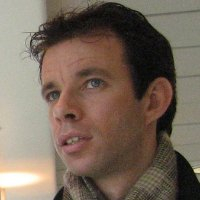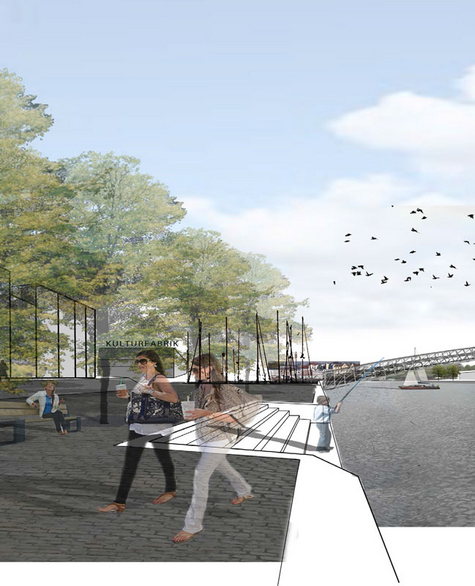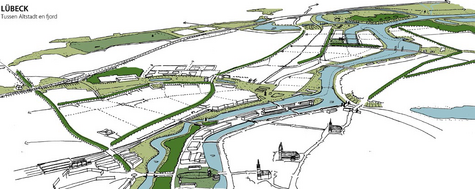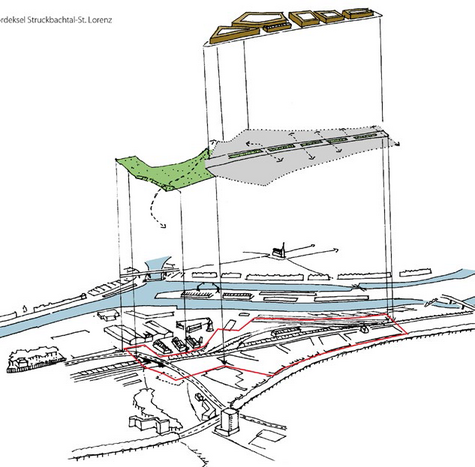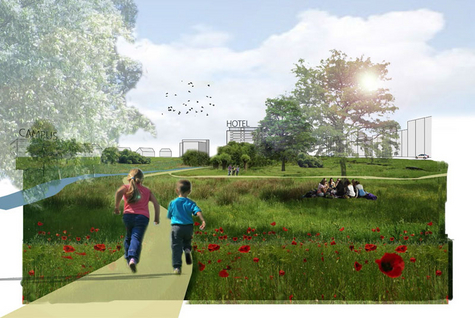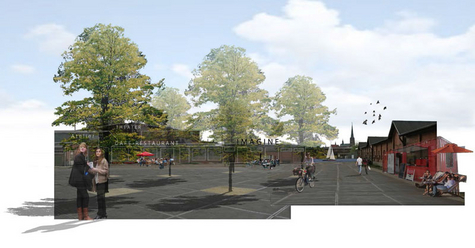Sjoerd Wolbertus
- Course
- Urbanism
- Class
- 2015
De Periferie Centraal: Bouwen aan een karaktervol Lübeck aan het Travefjord
The periphery is of vital importance for every metropolis in order to continue to grow. Optimisation of infrastructure is one of the most important tasks connected with that. In addition, the periphery is often subject to economic and demographic contraction. As the largest port on the Baltic Sea, Lübeck has strong competition and the opening of the Fehmarnbelt Tunnel in 2021 will further reinforce the drop in transshipment figures. In the meantime, the number of inhabitants of the once so proud ‘Queen of the Hanse’ is steadily decreasing.
As part of this project, leverage was sought for a favourable strategy for Lübeck as distinctive city on the Trave Fjord. In this project, the possibilities are shown for the city to tackle the changing international dynamics for qualitative growth. The development of the Lübeck is mainly based on planning policy and autonomous building developments. As a result, the city is becoming increasingly fragmented and the public domain is making it less and less inviting for Lübeck citizens to stay. That which makes Lübeck ‘unique (city on the Trave, stream valleys, industrial heritage) is increasingly falling into disrepair. This strategy will ensure that the contraction continues further, that the city becomes increasingly less liveable and vital, and that unique qualities are definitively lost.
In the Periphery Central, the foundation is laid for qualitative growth. In order to achieve this, strategic choices are made for the urban traffic network, efforts are concentrated on clustering of port activities and the Trave and stream valleys from a powerful framework for the city. The design consists of spatial interventions between Altstadt and fjord, with transformation of the city entrance and Teerhofinsel as key projects. The restored Struckbachtal is the heart of the transformation that is created through a gradual transformation of the business area. Living on a stream valley and fortress determines the revitalised identity of this city district.
In addition to the monumental city centre, Teerhofinsel is the second ‘jewel in the Trave’. This island is the gateway to the fjord and will soon be the place where city and fjord meet each other. From a closed military training ground to an inviting and natural destination for every Lübeck citizen and visitor.
The restored Struckbachtal is the heart of the transformation of the city entrance, between the A1 motorway and Altstadt. The crucial intervention is the railway tunnel, with which a sharp cut is stitched through the city. Between St. Lorenz, the restored Struckbachtal and the banks of the Trave, missing routes can be created and space arises for new inhabitants. Industrial heritage is given new significance again with public functions and space for events. St. Lorenz can grow once again and the location on the Struckbachtal and Trave will definitively rescue the old suburb from its isolation. Outside the UNESCO-protected Altstadt, the rich industrial history of Lübeck will become visible and perceptible once again. Lübeck’s tangible past will be definitively safeguarded.
Building on a distinctive Lübeck requires time and patience, and strong coalitions of public and private parties. The city will have to lobby strongly to profit from regional assignments. By embracing the new course and through focused investments, Lübeck will slowly but surely become a vital and proud city on the Trave Fjord once again.
Commission members: Jeroen Ruitenbeek (mentor), Riëtte Bosch, Hans van der Made. Additional members for the examination: Kirsten van den Berg, Rein Geurtsen.
